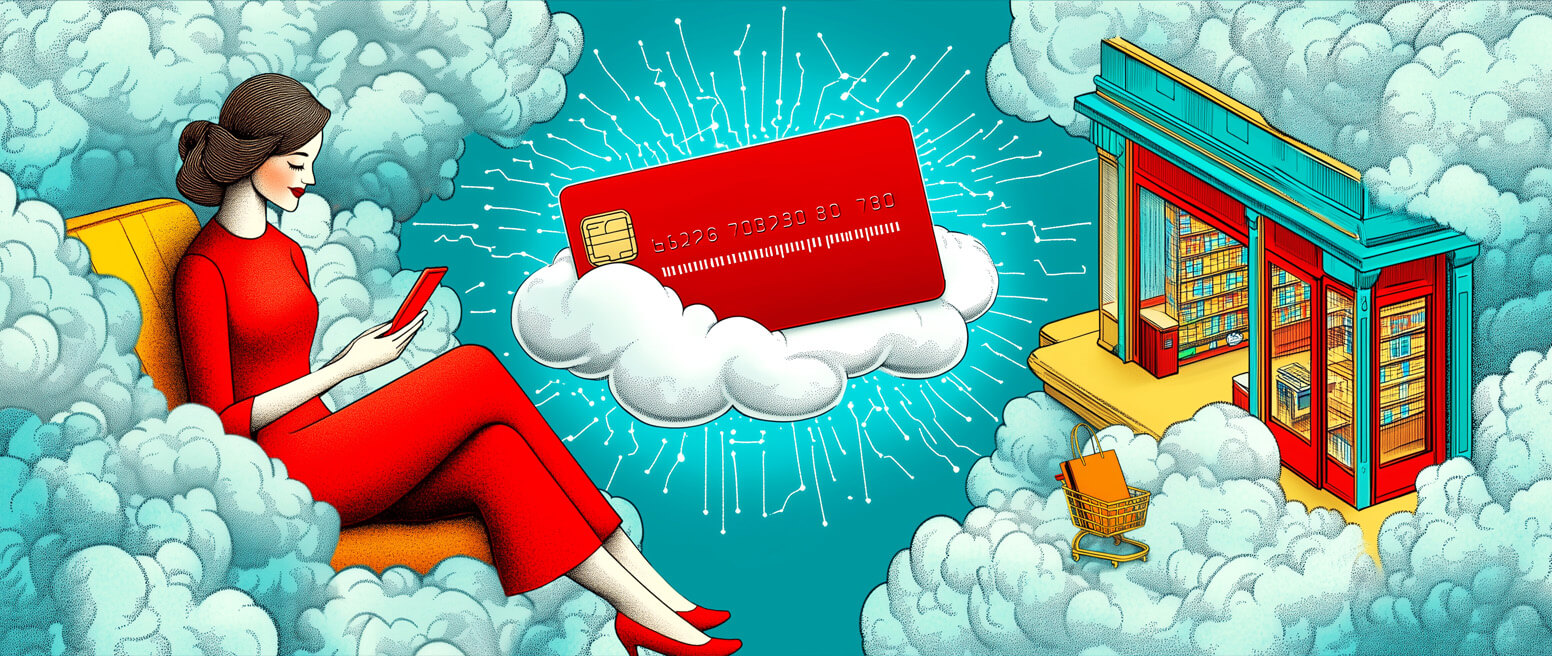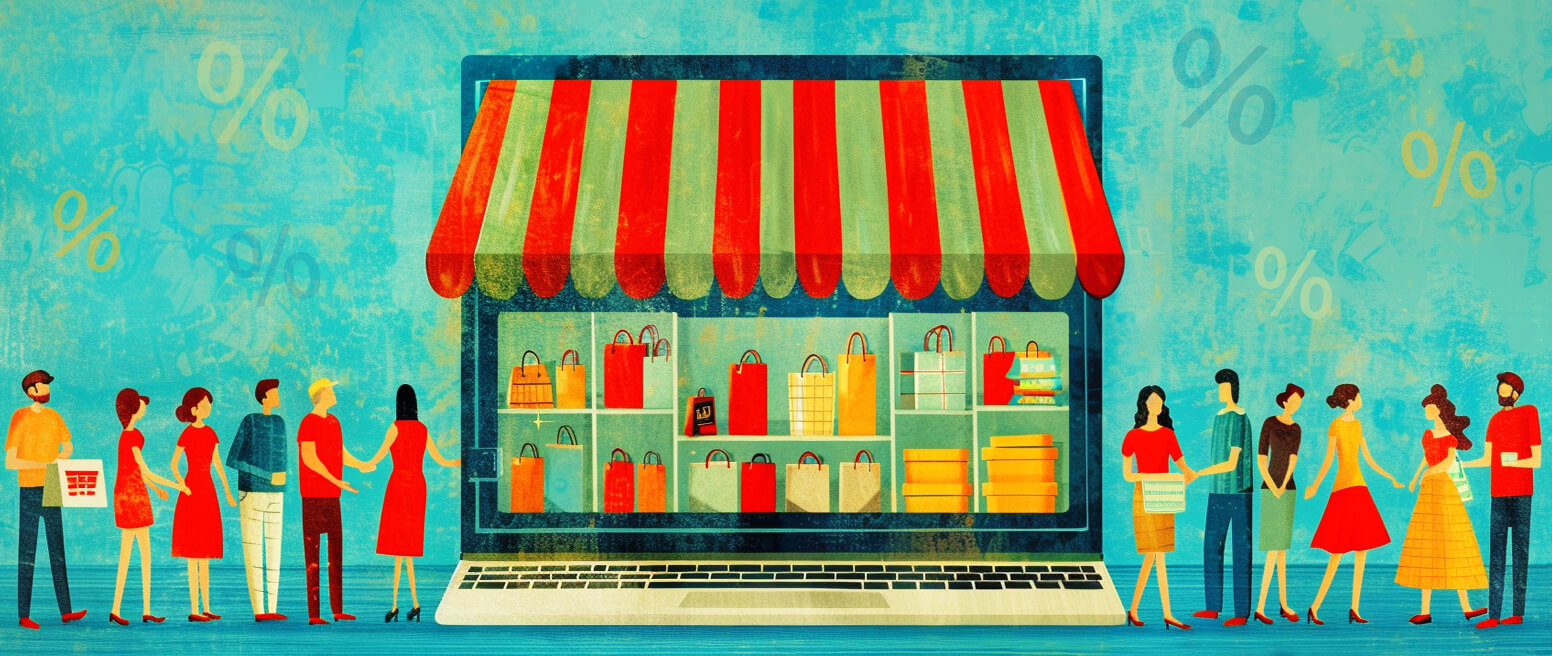Your Guide to Building a High-Conversion Omnichannel Retail Strategy
Shopping online is the new norm. Most consumers prefer to shop and make purchases on the go when possible. However, that doesn’t mean they don’t expect to be wowed by the end-to-end experience.
“Omnichannel retail” is no longer a marketing and retail buzzword. It’s now a fundamental reality of conducting business in brick-and-mortar and online settings.
This article will take a deep dive into omnichannel retail: what it is, how it works, and how it can benefit you as a merchant. We’ll also see what you can do to implement an omnichannel strategy.
Recommended reading
- Card-Not-Present Transactions: Know the Risks & Rewards
- Top 15 Customer Returns Reasons in 2025 & How to Avoid Them
- Online Shopping vs In-Store Shopping: the Future of Retail?
- They’re Here — Cyber Week 2024 Stats & Analysis!
- What is a Return Customer Rate? How to Calculate Your RCR
- Prime Day 2024: How to Avoid Chargebacks on the Big Day
What is Omnichannel Retail?
- Omnichannel Retail
Omnichannel retail is a cross-organizational sales and marketing approach that provides consumers with a fully-immersive shopping experience. Omnichannel retail optimizes and integrates multiple sales channels through high-level analysis and cooperation to meet and exceed consumer demand.
[noun]/* äm • nə • CHa • nl • rē • tāl/
Average shoppers do not differentiate between sales channels. In their view, all are a part of one comprehensive experience and should function as such.
Omnichannel retail addresses this expectation by bridging gaps between channels. It’s a new paradigm in retail. The end goal is to provide customers with the level of service they expect in a consistent and coordinated manner, regardless of the channel through which they shop or communicate.
Examples of different retail channels include:
Amazon stores
eBay
Social media
Mobile apps
Physical Retail
locations
Branded eComm sites
Affiliate networks
Google Shopping
An omnichannel retail strategy streamlines and simplifies the customer experience to ensure satisfaction. It also helps improve customer retention and protect existing revenue streams.
How Does Omnichannel Retail Work?
An omnichannel solution involves all of the gears and mechanisms that propel your business through your various sales and marketing channels. To illustrate this, suppose you have a brick-and-mortar shop. You only sell goods over the counter; this would be an example of a single-channel solution. If you sell goods over the counter and maintain a website to sell products online, this is considered a multi-channel solution.
“Omnichannel retail” refers specifically to the practice of selling through multiple channels which operate as an integrated, connected unit. Your sales and marketing approach must encompass various channels that share data as an integrated unit to be truly omnichannel. While omnichannel experiences are always multi-channel, multi-channel experiences are not always omnichannel.
Basically, an omnichannel retail experience connects all of your selling channels to provide consumers with a seamless shopping experience. To contextualize this, a buyer who is shopping in a retail store at the mall might download the retailer’s app to virtually ‘try on’ various articles of clothing without waiting for a dressing room. They might scroll through several similar options and even make purchases online while shopping in-store. Omnichannel retail helps the customer get what they need, when they need it, across formats.
Why You Need an Omnichannel Retail Platform
Whether your brand is omnichannel or not...your customers already expect you to operate as though you are.
In fact, according to Shopify, consumers have grown to expect a completely connected experience no matter the channel they’re shopping. 54% of consumers prefer to shop online and pick up the item in-store. 53% prefer the opposite; they want to shop in-store but buy online.
To meet demand and successfully integrate an omnichannel retail strategy with your platform, ask yourself:
- Is your business app-enabled? Can customers browse and scan items in-store for at-home comparison and purchase later?
- Is your online shop interactive? Can customers browse styles and options online or via social media and receive coupons or promos for in-store or online redemption?
- Is your brand integrated? Is your data connected across multiple channels to provide customers with notifications or alerts when favored items are pending or released?
Benefits of Omnichannel Retail for Merchants
Ever since the onset of digital commerce, consumers have been eager for solutions that make things easier and more convenient, even if they didn’t realize it. Of the many reasons merchants should be considering omnichannel methods seriously, here are some of the most compelling:
How to Build an Omnichannel Strategy
Research is needed to identify where customers are active and how they like to spend their money. Producing reliable and traceable data from this research demands an impartial and objective examination that is not colored by the merchant’s assumptions or desires.
Step 1 | Identify Your Market
The collection and analysis of this body of data make it possible to produce a detailed map of the customer journey. This is a necessary process. Below are just a few of the factors which might affect demand for a business’s services across different channels:
- Product category
- Brand identity
- Country or region
- Company size
- Target consumer
Research gives you the insight to anticipate customers’ needs and desires even before the customer is personally aware of them. This way, you have the power to offer unique and desirable experiences, increasing customer satisfaction and loyalty.
Step 2 | Gauge Demand and Make a Plan
This ties in closely to another widely-discussed topic in recent months: contextual commerce.
A contextual commerce strategy enables customers to shop anywhere, at any time, facilitating increased interactions between merchants and consumers. However, having every channel open is not always feasible, making it necessary to gauge demand in each channel and allocate resources accordingly.
Armed with research regarding consumer preferences and engagements, you can avoid wasting resources on less-effective platforms while potentially under-utilizing channels through which more customers arrive.
For example, you might be tempted by the earning potential of an offline presence. However, a massive push into brick-and-mortar space isn’t necessarily a requirement.
Still, allocating resources based on past data is only half of the job. The fact that omnichannel retail changes so rapidly means the only way to stay current is to be ahead of the curve and plan for new developments. You waste time and resources if you don’t consider scalability while laying the groundwork for infrastructure.
Step 3 | Coordinate Different Channels
Remember: just because a business strategy incorporates more than one customer channel does not necessarily make it an omnichannel retail strategy.
“Multichannel” and “omnichannel” approaches to business operations are not necessarily similar. The critical difference between the two is coordination; each hand knows what the other is doing. The essence of the strategy is that each channel is aware of the other, enabling customer interactions to transition seamlessly. This avoids silo approaches, which can lead to differences in response and service depending on context.
The best way to approach this is to look at the process from the perspective of the person who matters most in the equation: the customer.
This is a crucial point to ensure customer satisfaction and continued sales in the future while protecting existing revenue sources, regardless of your larger strategy. If customers find it too difficult to engage with you and address their concerns in the manner they prefer, they are more likely to take matters into their own hands by committing friendly fraud.
Step 4 | Play to the Strengths of Each Sales Channel
Even after you develop a winning strategy and sync various customer outlets, that doesn’t mean the job is done. Once you optimize communications across channels, then it’s necessary to optimize communications within the channels.
Each channel thrives based on a primary method of communicating information. You must break down the interactions not just on a macro level—like in-store versus online—but on a micro-level as well. For example, Instagram and Pinterest are heavily visual, while Facebook and Twitter work best with a concise blend of text and search-optimized images or videos.
You have to break down each channel into its individual components, and then optimize from there.
What are the Challenges of Omnichannel Retail?
Despite its overwhelming promise, there are 3 primary challenges you face when preparing to implement an omnichannel retail strategy.
How to Make Omnichannel Retail Work for You
Developing the right omnichannel retail solution is not easy. The process will be time-consuming, and it will never truly be complete, as new developments demand continuous and ongoing adjustments. Perhaps even more concerning are the new fraud threats you’ll encounter with each additional channel.
All that said…the risk is most definitely worth the reward.
When done properly, an omnichannel experience will increase customer retention, generate new revenue streams, and help your business remain competitive in a dynamic environment—all contributing to greater sustainability and longevity.














